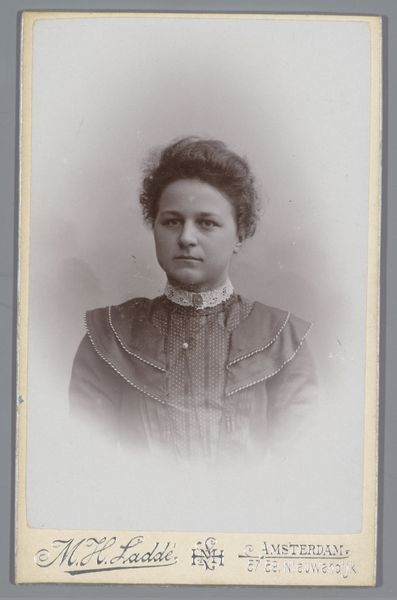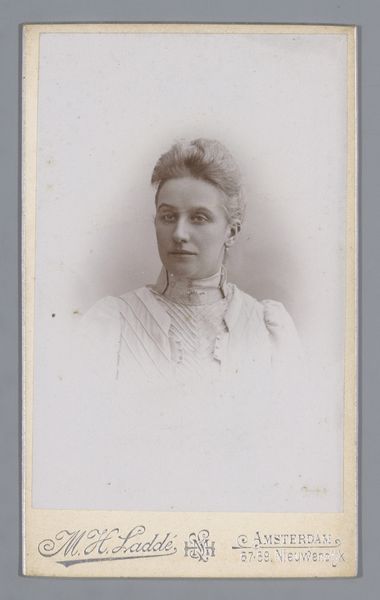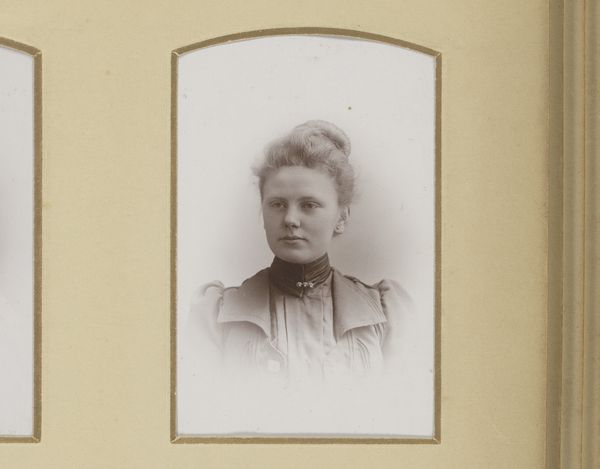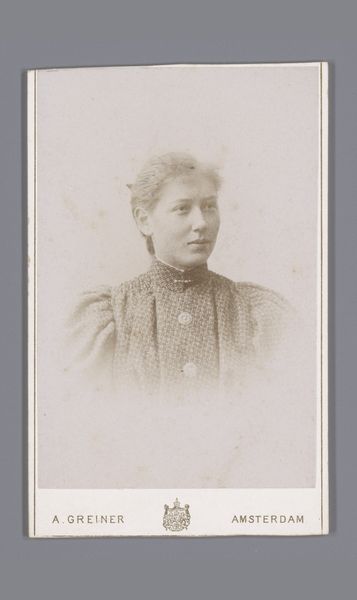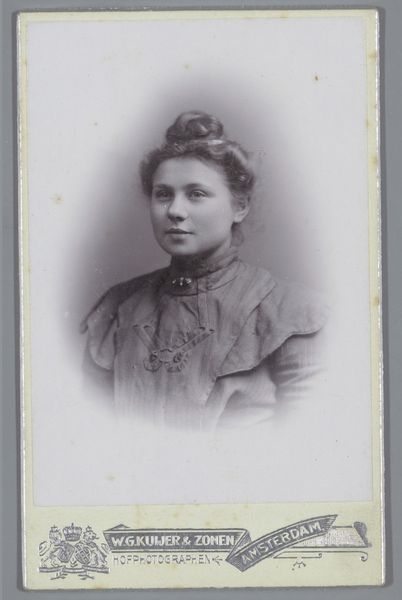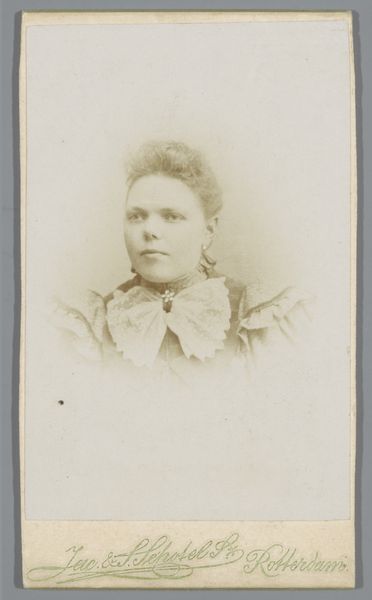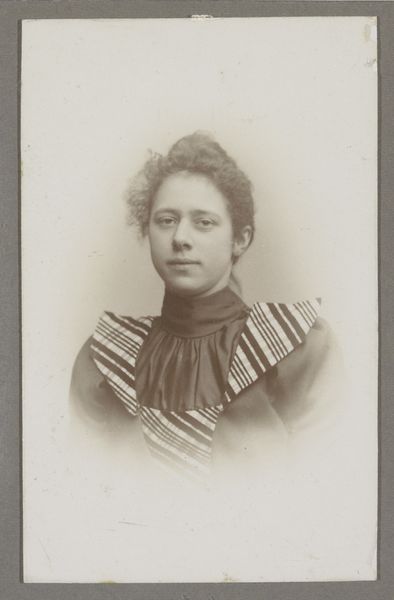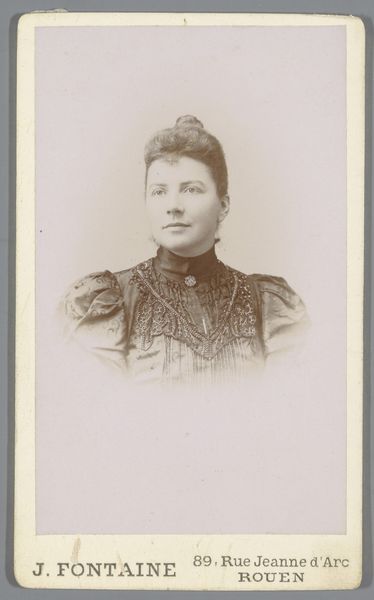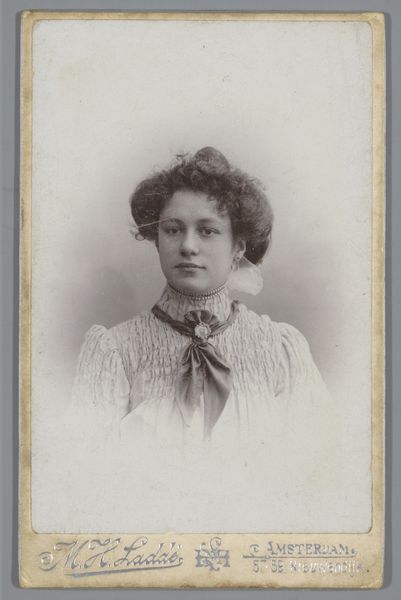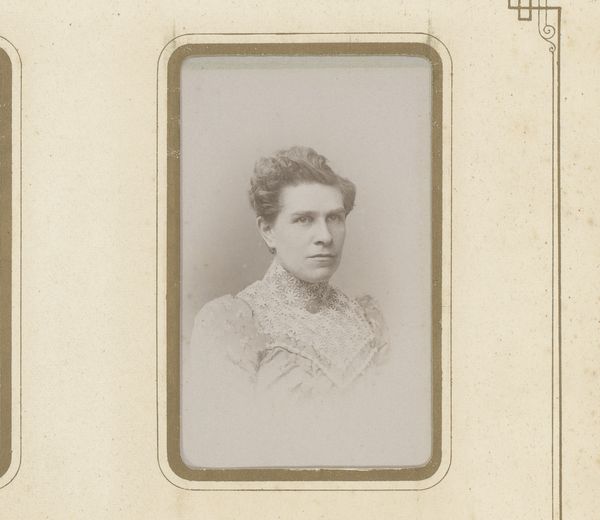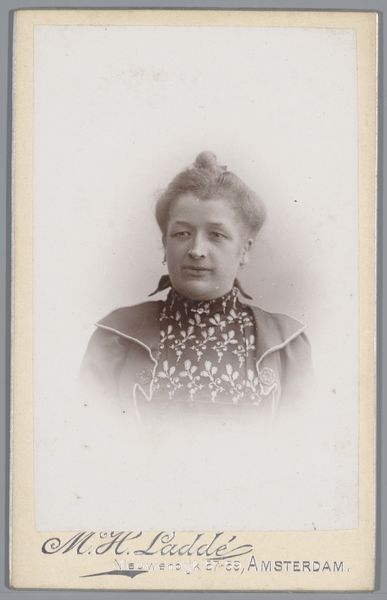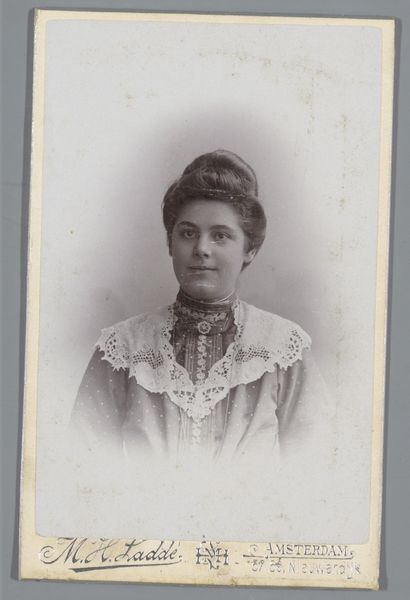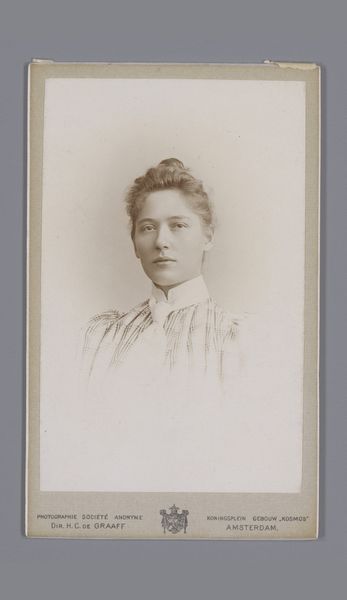
photography, gelatin-silver-print
#
portrait
#
photography
#
coloured pencil
#
gelatin-silver-print
#
realism
Dimensions: height 104 mm, width 65 mm
Copyright: Rijks Museum: Open Domain
Curator: This gelatin-silver print, dating from around 1892 to 1906, is simply titled "Portrait of an Unknown Woman." It comes to us from the collection of the Rijksmuseum, created by the Amsterdam-based photographer Machiel Hendricus Laddé. What strikes you about it? Editor: There’s an immediacy, almost a solemnity to it. The subject’s direct gaze holds a certain weight. The tones are muted, giving it a ghostly effect, as though she's staring out from a fading memory. Curator: Indeed, the medium contributes greatly to that effect. The gelatin-silver process often yields this characteristic tonal range. And yet, there’s a classic portrait composition here—it echoes painting styles of earlier decades, where an individual's status was displayed in controlled, formal portraiture. The woman’s brooch, her high-necked blouse, and even her neatly arranged hair, all contribute to an air of bourgeois respectability. Editor: But within that framework, doesn’t there seem to be a defiance in her eyes? Consider the burgeoning feminist movements of the late 19th century. Could her steady gaze suggest a quiet challenge to the limited roles prescribed for women? Even her very ordinariness becomes a political statement. She seems to say, "I exist, and I matter." Curator: That is a powerful interpretation! It brings me to the importance of symbolism. Notice that central brooch, almost a focal point. It signifies status, yet, also, a closing or fastening. Is it protection, or is it constraint? Laddé doesn’t tell us, does he? Perhaps her direct and very present gaze demands to break beyond it? Editor: And I'm compelled to return to the ‘unknown’ nature of her identity. Laddé gives us this single image – a brief encounter across history, stripped of narrative beyond the sitter and the artist. The very absence of identifying details reframes the piece. She becomes Everywoman. It suggests broader reflections about identity, representation, and what photography really ‘captures.’ Curator: I concur. The mysteries held by such images resonate powerfully across generations, inviting fresh engagement with both the known and unknown, and questioning, continually, the symbolic nature of a face from the past. Editor: Yes, the absence of a definite narrative can often encourage deeper connection to universal struggles and the enduring power of visual representation.
Comments
No comments
Be the first to comment and join the conversation on the ultimate creative platform.
